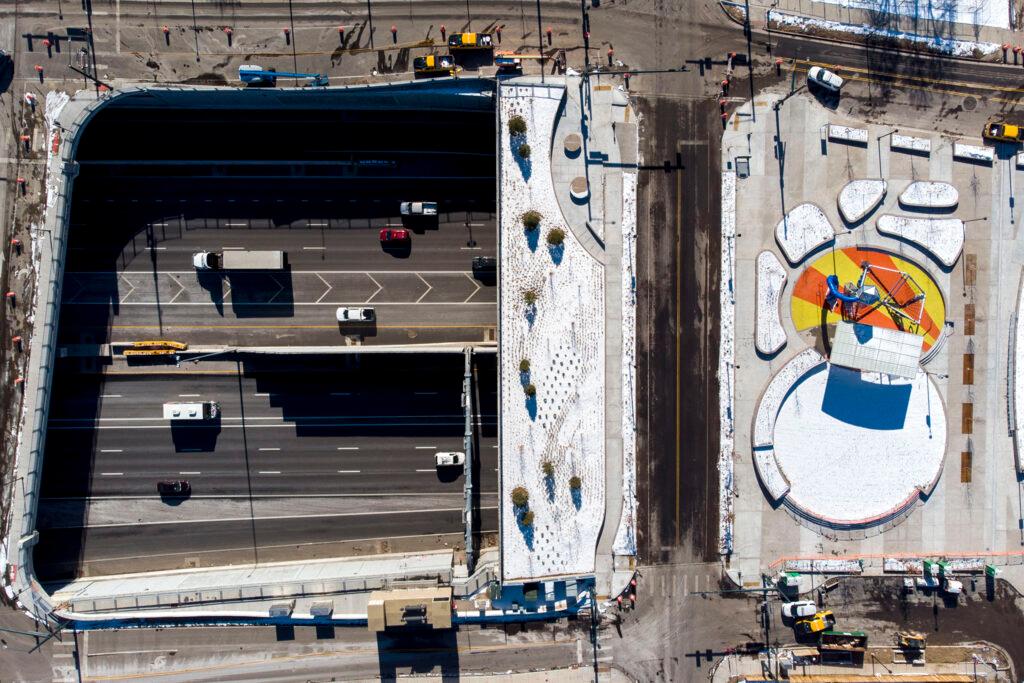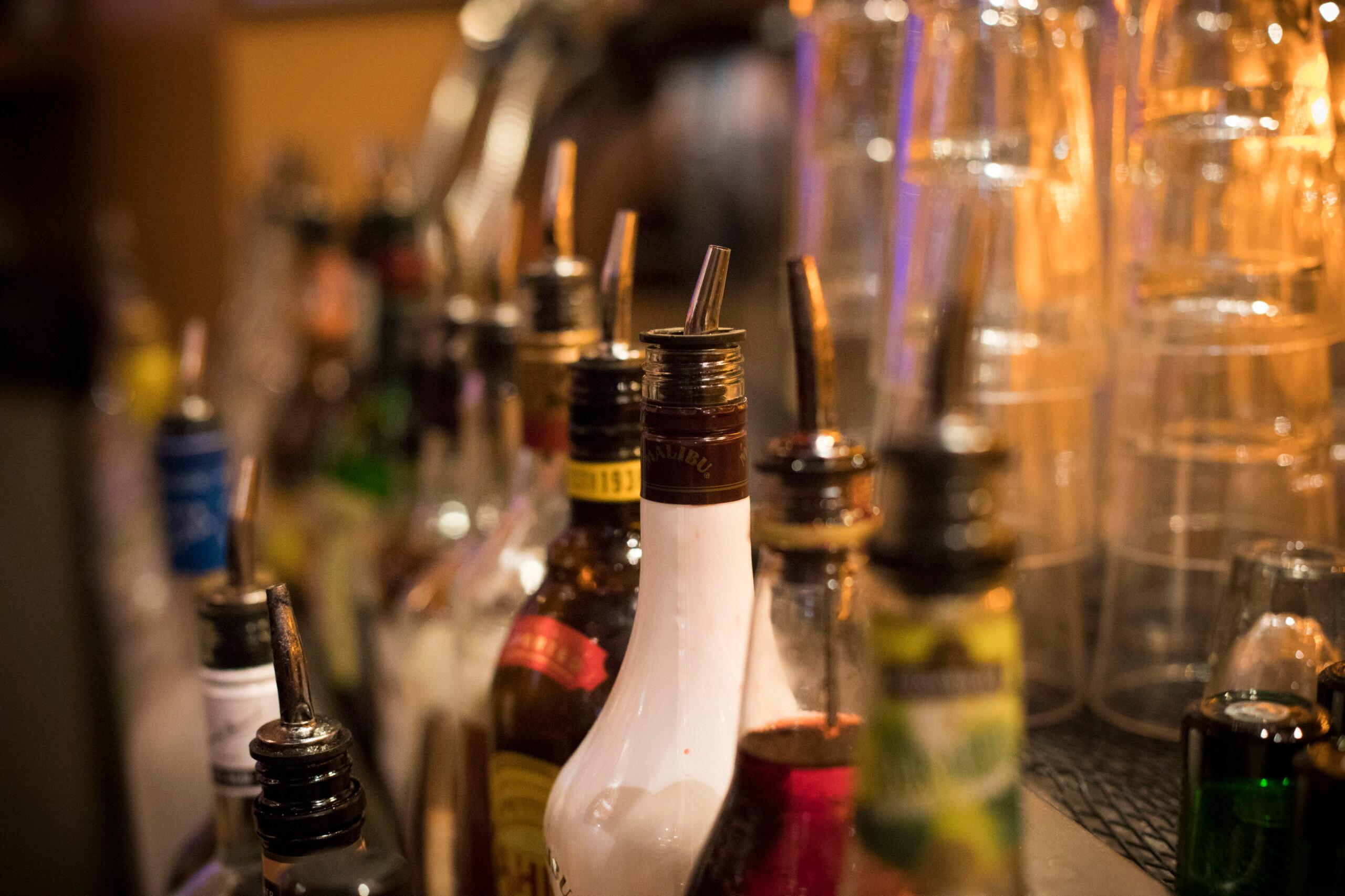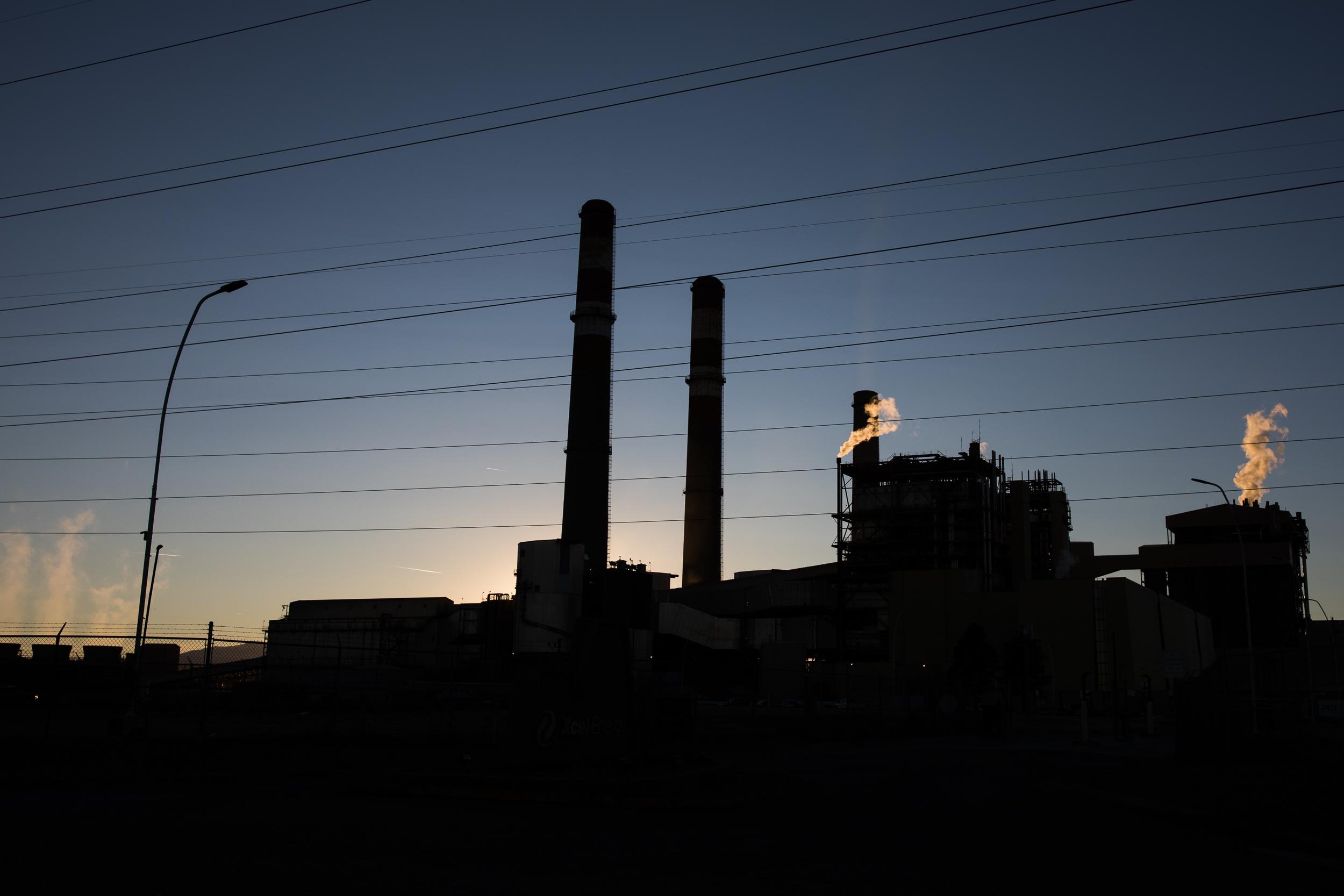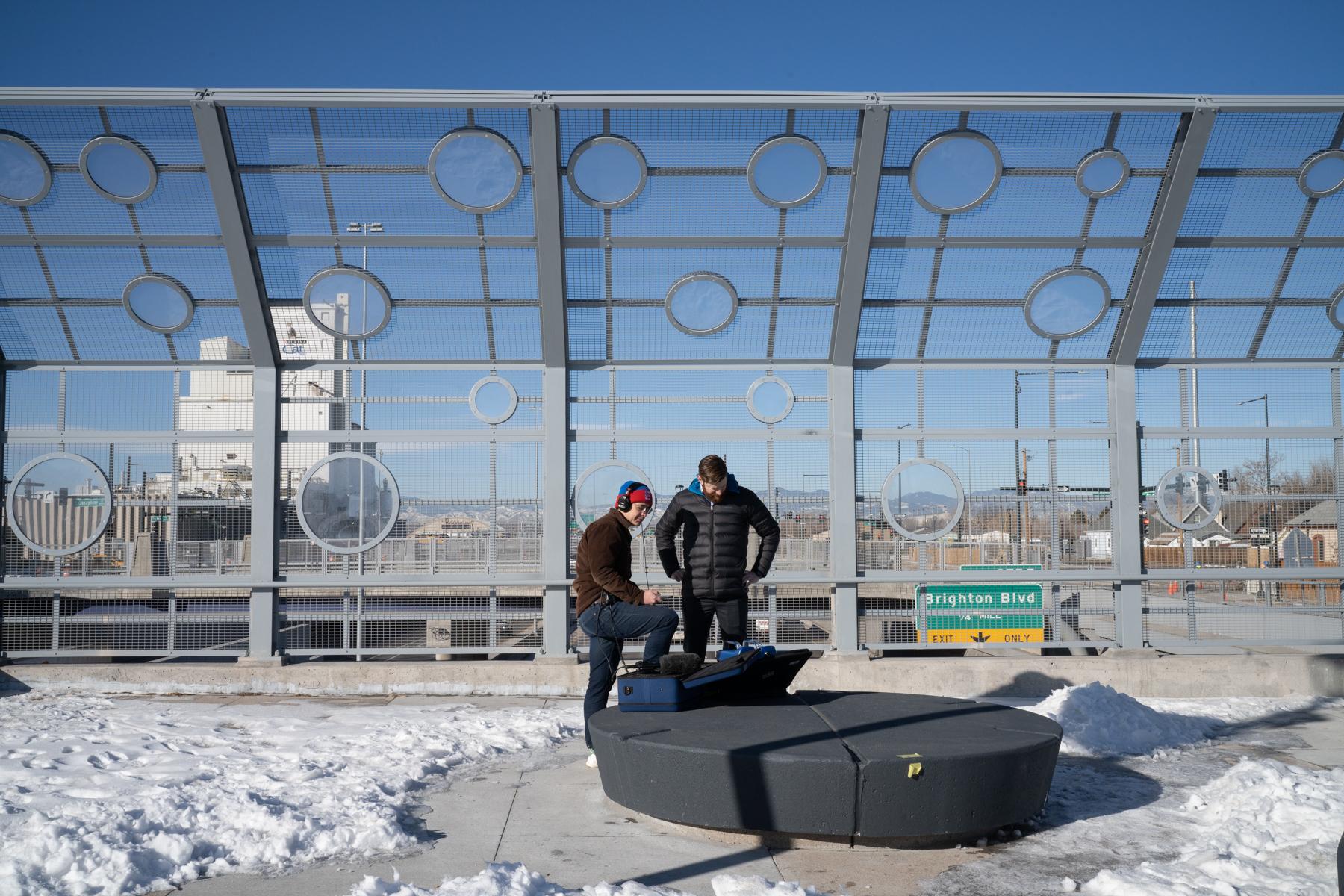
CPR News conducted air quality testing for two days in February and June 2023.
For the first, we rented a pair of handheld sensors that detect and count ultrafine particles emitted from vehicles. We positioned one of the instruments at the park and another more than 1,500 feet downwind to provide control readings. We repeated this five times over 20-minute periods, testing pollution levels at both edges of the park near the highway tunnel entrances and at locations closer to the center.
Nick Clements, a postdoctoral air quality researcher at CU Boulder, assisted with the process.
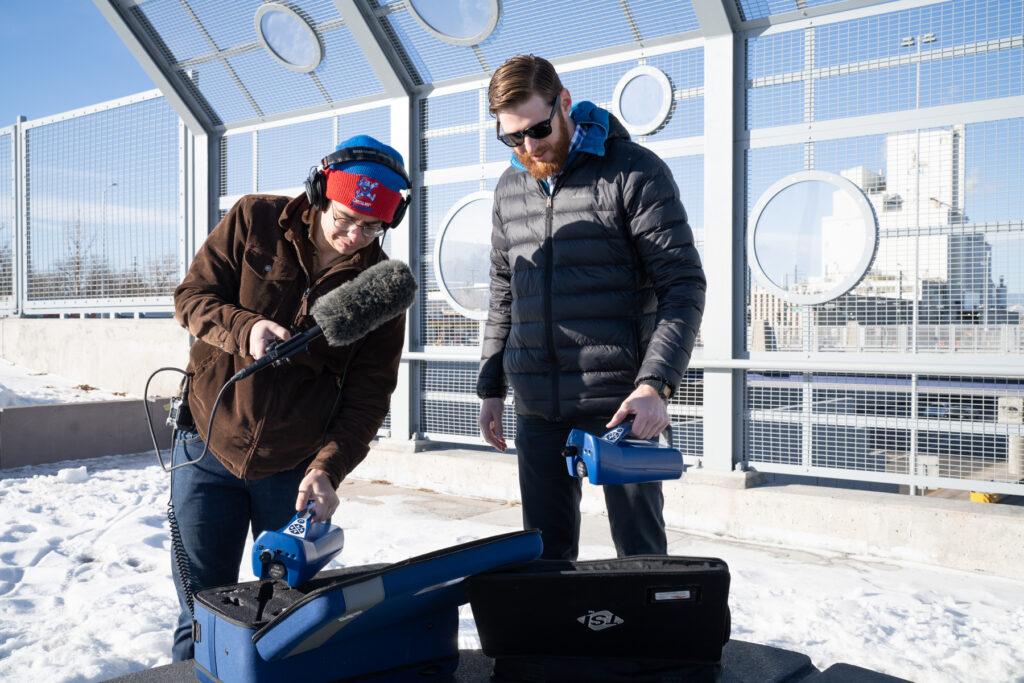
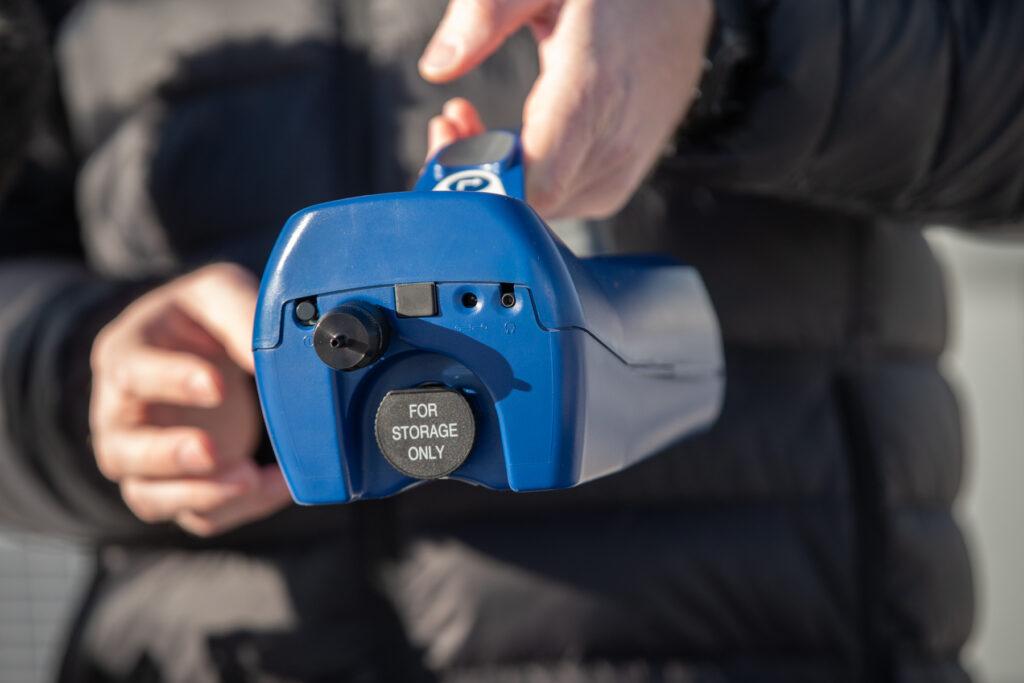
For the second round of testing in June, we ran three low-cost monitors to measure PM 2.5, a class of larger particulates also associated with traffic pollution. Instead of short periods of measurement, the instruments were operated continuously for a 10-hour period. One was located near the center of the park. Another near its eastern edge. A third control device was positioned more than 1,500 feet downwind at a family resource center.
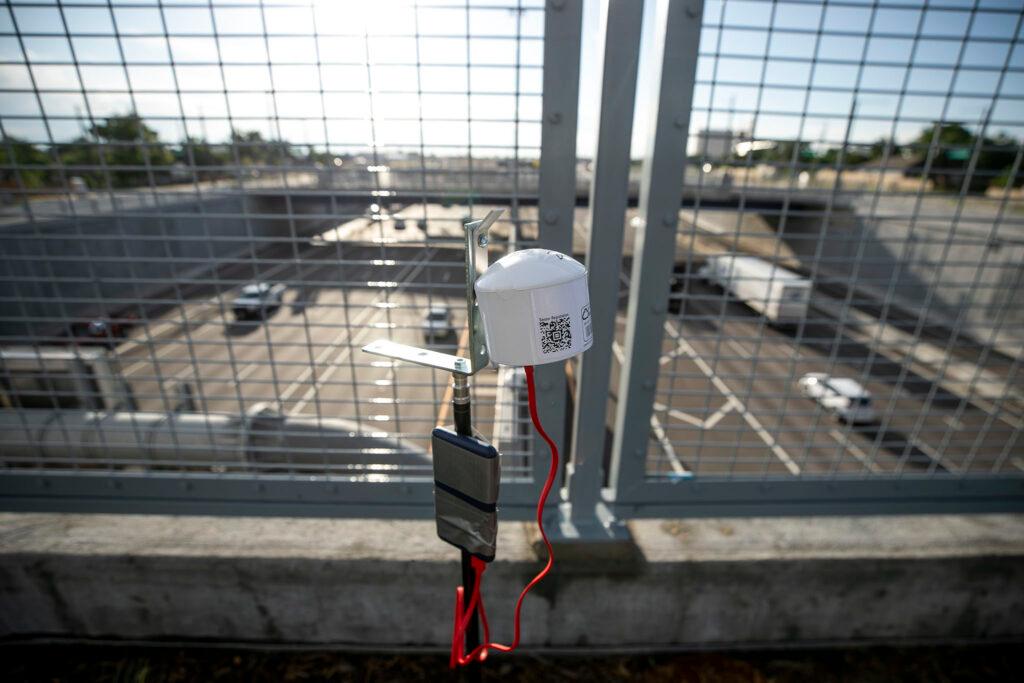
The data from the February testing suggest levels of ultrafine particles were slightly elevated near the park’s edges. Any measurable difference disappeared, however, for readings recorded closer to the center of the cover park.
The data from the testing in June also suggested high pollution levels near the park’s edge, but the monitor at the center measured overall lower pollution levels compared to the control sensor.
